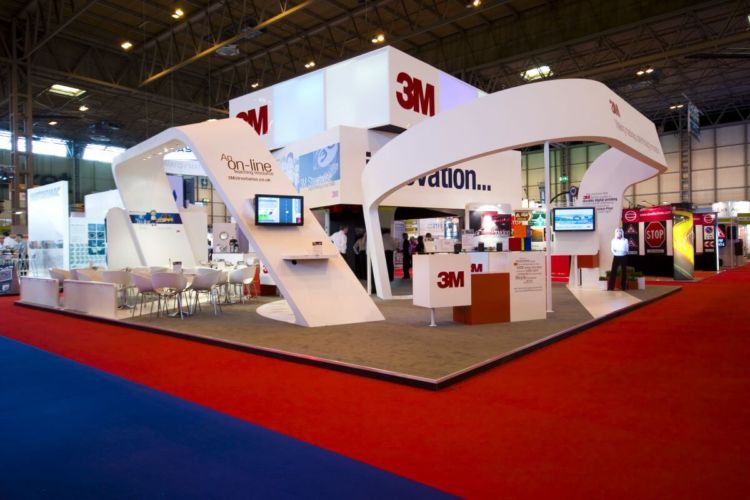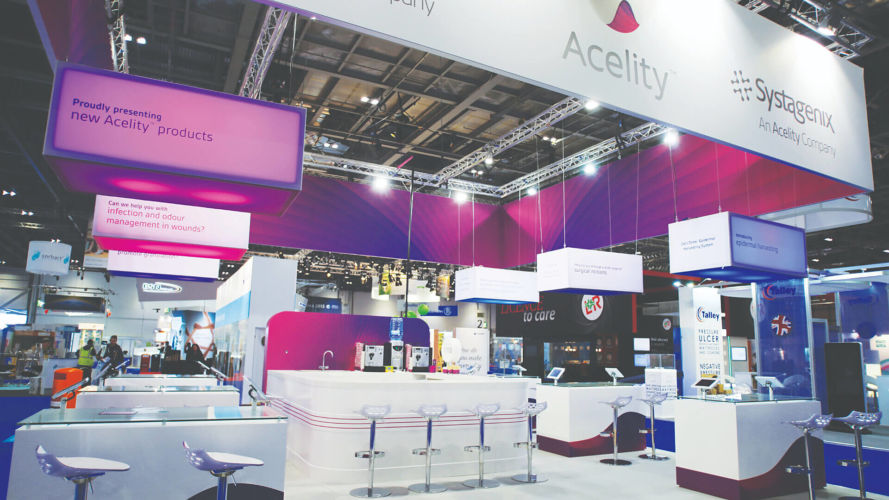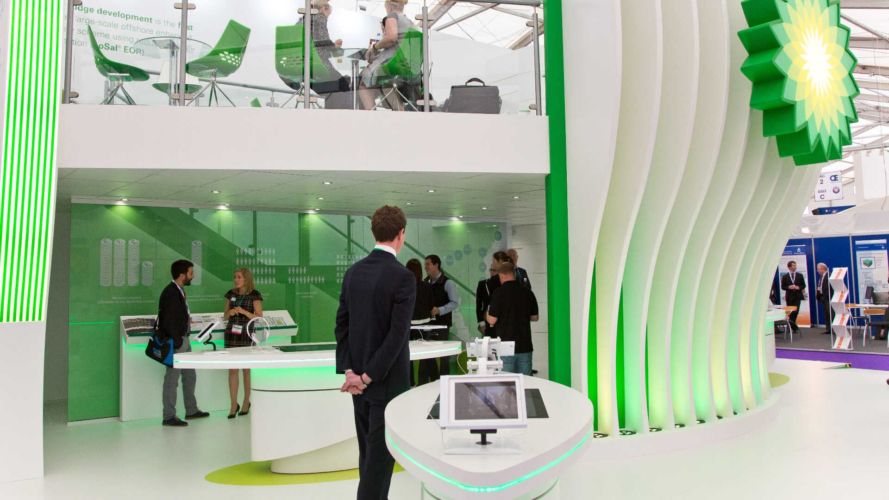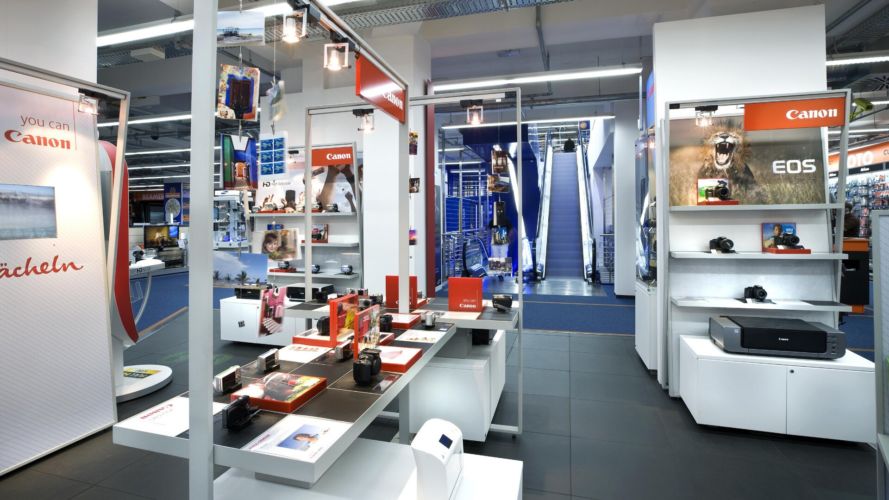How to plan a successful exhibition
Exhibitions and events can require a big investment but, when planned and executed correctly, they can deliver a strong ROI.
Home Exhibition News Planning A Successful Exhibition
Where to start?
This can include generating direct sales, boosting new business leads, building new contacts, conducting first-hand market research, reaffirming your company’s brand and visibility, as well as being an excellent platform to launch new products and services.
We’ve found that making the most of our client’s investment and maximising their presence is down to six main things:
Measurement
Planning
Attracting
Engagement
Connecting
Evaluating
Measurement
Evaluating
Planning
Connecting
Attracting
Engagement
Measurement
To experience success you must have something to measure it by. Planning an exhibition or event is no different and we always recommend that we start with a clear set of objectives so that we can deliver success. Some of the objectives that could be considered for an exhibition or event are:
- Sales
- Customer Relationships
- Market Research
- Media Relations/PR
- Brand Building
- Channel Building and Support
Depending on what the final list of objectives are, will shape the whole event, the message, visual content, architecture and even the vibe.
Planning
It’s easy to underestimate the time it takes to properly plan a successful exhibition or event. To avoid the stress and headaches that short deadlines create we recommend that you start planning at least 6 months prior to the show and ideally 12 months before.
This time frame will make life for you and your colleagues much easier and help to avoid last minute panics and extra expenses.
A written exhibition plan should provide:
- Research (visit the show you are thinking of attending and review online posts from previous events)
- Objectives
- Time scales
- Budgets
- Space requirements
- Stand and graphic design parameters
- On-site services
- Transportation and logistics
- Staffing levels and training
- Pre- and post-show promotions
- Show evaluation criteria
- On-stand data capture
- Follow-up procedure for leads
When working with a specialist agency they will guide you on these points and in some areas take complete control if you require, this can be very useful when you have another full time job to carry out!
Attracting
Every square meter of your stand needs to work hard to communicate your brand, but this doesn’t mean cramming every inch of your stand with copy-heavy graphics or display cases. Use of brand colours, interesting materials and innovative lighting, high-level branding and strong graphics that communicate a central theme help to grab people’s attention and deliver the ‘wow-factor’.
It’s not just about creating a big impact, however, as being too ‘in your face’ can be off-putting for visitors. Providing a welcoming, open and bright environment that guides visitors on a buying journey around the stand is crucial to delivering a great visitor experience, and to sales. A hospitality area with comfortable seating and a selection of drinks on offer is always a draw and provides an ideal place for informal business meetings and networking.
Stand attractors are a great tool for capturing visitors’ attention. Live social media walls are fantastic at generating buzz and encouraging visitor interaction, as well as communicating your messages beyond the walls of the exhibition hall. Competitions for high-value prizes, promo staff and entertainers, interactive games and displays, free giveaways and clever use of technology all encourage interaction with your visitors and can help gather crowds. Whatever tactics you choose, it’s important to ensure that any activity is well thought through and relevant to your business messages or the products/services you provide.
Engaging
Once you’ve attracted visitors to your stand, it’s vital to engage with them in a memorable way. People don’t attend exhibitions to interact with social media walls, enter competitions or receive free giveaways – although these do help drive footfall – these draws are not enough to keep them on your stand for long. Visitors take time out from their busy schedules to search for the latest solutions that will help solve their business problems and make their working lives easier. Once they have got past the initial draw, there needs to be substance behind the stand.
Having a clear understanding of what your prospects and potential customers’ needs in advance of the exhibition allows you to adapt your on-stand messaging to answer their problems and anticipate any questions they may have. Demonstrate your products/services in context for the visitor and provide more detailed information for the visitor to take away and access after the exhibition via branded, pre-loaded USBs, an online link, or printed collateral.
Having the right balance of staff manning your stand is important. No one likes being pounced on by a pushy sales person, but equally your staff need to appear confident when approaching visitors, have excellent knowledge of the products/services your company is offering and how they are of use to your visitors. A thorough staff briefing going through messaging, targets and dos and don’ts before the exhibition doors are flung open is a must.
Connecting
So much hard work, and often budget, goes into organising a successful exhibition, and it can all be in vain if the follow-up isn’t well planned and executed.
Through exhibitor manuals, you can hire data capture devices that allow you to record your visitors’ contact details along with information relating to their specific enquiry. This intelligence is invaluable and should be used to connect with your visitors shortly after the event with a tailored and highly relevant follow-up.
Making the effort to personalise your communication is really worth it, as it demonstrates to your new contacts that you’ve really taken the time to understand their business pain and are committed to helping them find the best solutions for them.
Evaluating
The final and, arguably one of the most important aspects of organising an exhibition, is what can often get overlooked at the beginning of the whole planning process – evaluation.
To determine the success of an event and learn from areas that could be improved next time involves defining measurables clearly at the start of the planning phase.
These success metrics could include feedback from visitors, the number of new business leads generated, the amount of direct sales taken, the level of interaction from visitors via social media, etc. Without these in place, how can you measure the effectiveness of your exhibition or event activities and truly understand the return on investment that this kind of face-to-face customer engagement can generate?






